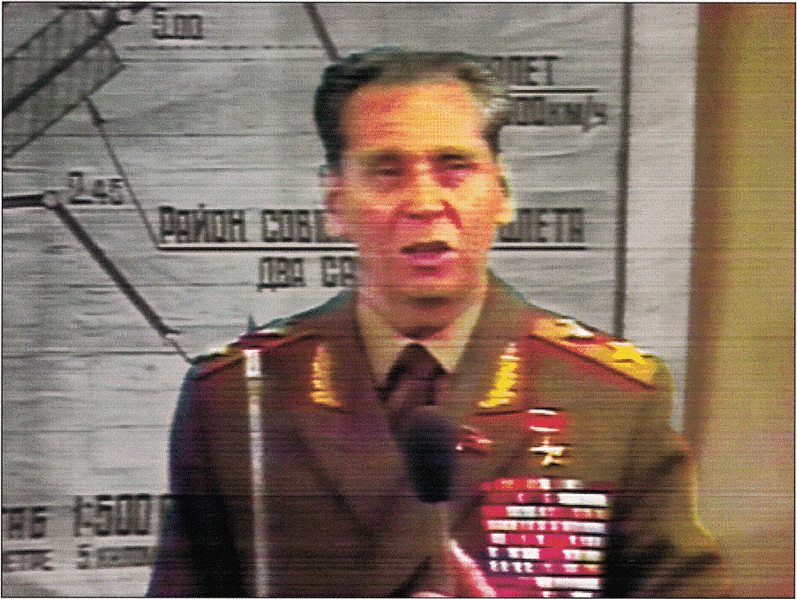
This post is part one of a two part extract by the editors from Paul Dibb's paper The Nuclear War Scare of 1983, to be released tomorrow.
The last crisis of 1983 was one of the most dangerous episodes of the Cold War. At the moment of maximum stress in the US-Soviet relationship, following a sequence of events that included the shooting down of a Korean civilian airliner by Soviet air defences, and a NATO command post exercise called ‘Able Archer’.
During 7-11 November 1983, the NATO exercise practised nuclear release procedures and was the culmination of NATO’s annual ‘Autumn Forge’ exercise from August to mid-November, which involved 60,000 NATO and US troops. But the 1983 version included crucial new changes. First, it was planned to involve high-level officials, including the US Secretary of Defense and the Chairman of the Joint Chiefs of Staff. Second, the exercise included a practice drill that took NATO forces through high spectrum nuclear warfare and a full-scale simulated release of nuclear weapons against the Warsaw Pact. Moreover, the procedures and message formats used in the transition from conventional to nuclear war were different from those used before and in this exercise the NATO forces went through all of the alert phases from normal readiness to war alert.
According to the KGB defector Oleg Gordievsky, Soviet Premier Andropov now had a fixation on the possibility that the US was planning a nuclear first-strike against the USSR. He had ordered a top priority classified intelligence collection program against the West which called for close observation of all political, military, and intelligence activities that might indicate preparations for mobilisation for war. This could occur under cover of an apparently routine military exercise—such as Able Archer. KGB station chiefs were instructed to obtain information on 'the organisation, location, and functioning mechanism of all forms of communications which are allocated by the adversary for controlling the process of preparing and waging a nuclear war'.
Soviet surveillance around US bases in Europe reported changed patterns of officer movement and alarmist KGB reporting persuaded the Soviet leadership that there was a real alert involving real troops. Thus 'the KGB concluded that American forces had been placed on alert—and might even have begun the countdown to nuclear war'.
This kind of KGB reporting continued throughout the exercise. At the same time, the GRU (Soviet military intelligence) instructed all its posts overseas to obtain early warning of enemy military preparations so that the Soviet Union would not be surprised by the actual onset of war. Soviet military reactions included putting Soviet fighter aircraft in East Germany and Poland on heightened alert and loading them with nuclear weapons. Units of the Soviet Fourth Air Army went onto increased readiness, and there was considerable activity by Soviet and other Warsaw Pact forces between 2 and 11 November 1983. In the following days, the Soviets realised that there hadn't been a mobilisation of NATO forces for war, but until the accession of Gorbachev to power in March 1985 they remained deeply concerned about the US deliberately initiating a surprise nuclear attack.
Despite all this, and despite nuclear weapons being prepared for delivery at short notice, the CIA didn't really grasp how alarmed the Soviet leaders had been until quite some time after the exercise had concluded. The US became aware of a different view only when British intelligence issued an assessment in March 1984, reviewing Gordievsky's reporting that the Soviets had taken very seriously the threat of a pre-emptive nuclear strike in 1983 and had thought that nuclear war might have been imminent during the Able Archer exercise. Even so, official US intelligence assessments in 1984 still didn't take the warnings seriously.
Robert Gates, Deputy Director for Intelligence at the CIA in 1983, now acknowledges that US intelligence was seriously deficient in 1983-84. He asks whether the US had come close to a nuclear crisis and not even known it. Had the US intelligence community badly misread the state of mind of the Soviet leadership? And had there nearly been a terrible miscalculation, he asks?
Gates says that he now believes the Soviet leadership really felt that a NATO attack was at least possible and that they took a number of measures to enhance their military readiness. He concludes that the Soviet leadership seemed to believe that the situation was very dangerous and that US intelligence had failed to grasp the true extent of their anxiety. A re-examination of the whole Able Archer episode by the President’s Foreign Intelligence Advisory Board in 1990 (document still classified, but summarised
here) concluded that the intelligence community's confidence that this had all been Soviet posturing for political effect was misplaced.
For a day or two in 1983, the world was close to a catastrophic nuclear war—over the misinterpretation of a military exercise. That such a situation could come about after three decades of Cold War, with all the elaborate mechanisms that had been hammered out over the years, is sobering. And there are lessons from this incident that apply today. I'll come back to those tomorrow.
Paul Dibb is Emeritus Professor of strategic studies at The Australian National University. Image courtesy of Wikimedia Commons. Print This Post
Print This Post